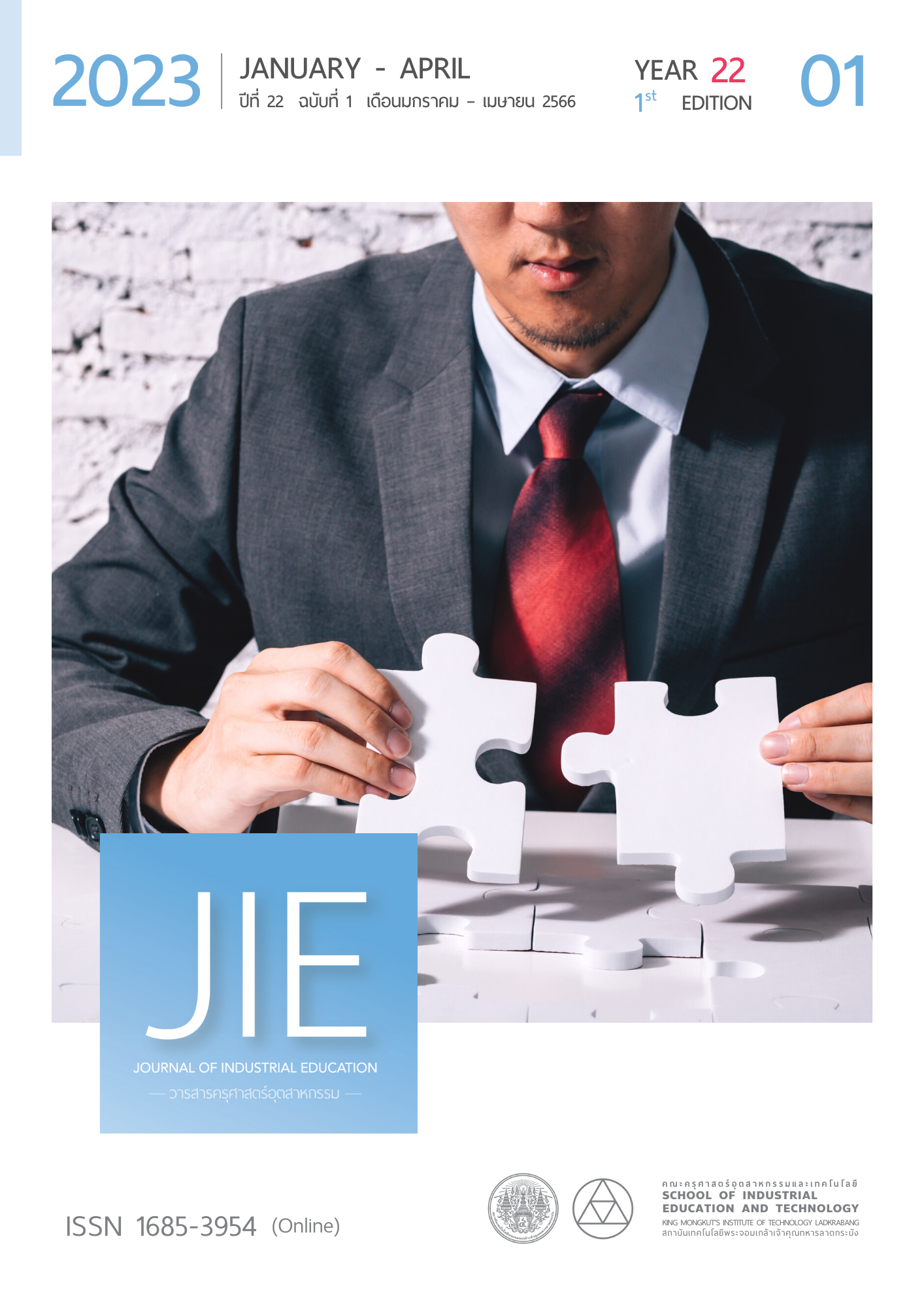E-LEARNING PROGRAM FOR CHILDREN’S EXECUTIVE FUNCTIONS DEVELOPMENT FOR 5-7 YEARS OLD
Keywords:
E-Learning Program, Executive Functions, Child’s Brain Development, CANTAB TestAbstract
This research is an experimental research on the development of an e-learning program for children’s executive functions development at 5-7 years old. 40 children between 5-7 years old, live in Bangkok Metropolis and Vicinity were participated in the study and divided into two groups; 20 children for the experimental group and 20 children for the control group. Both groups of samples must be children with normal physical and brain development. An e-learning program for children’s executive functions development for 5-7 years old and Cambridge Neuropsychological Test Automated Battery (CANTAB) are all tools used to collect data. The results revealed that 1) the e-learning program for children’s executive functions development for 5-7 years old was the most suitable. 2) The difference in CANTAB test scores indicated that the experimental group received a better post-score than the control group with a statistically significant level of 0.01. The F statistic of SSTSSRT, ERTORTSD, IEDECS, SWMTE, AND OTSMDLC score are equal to 700.29 (p < 0.01), 228.39 (p < 0.01), 162.61 (p < 0.01), 365.73 (p < 0.01), and 264.45 (p < 0.01) respectively. In addition, the results revealed the effect size (h2) equal to 0.85, 0.68, 0.67, 0.76, and 0.84 respectively. These results indicated that the e-learning program for children’s executive functions development for 5-7 years old was effective.
References
Assawapalangchai, P. (2018). What is EF (Executive Function) in young children? Retrieved from https://moneyhub.in.th/article/executive-functions/
Anderson, P. (2002). Assessment and development of executive functioning (EF) in childhood. Child Neuropsychology, 8(2), 71-82.
Cambridge Cognition. (2012). CANTABeclipse: Test administration guide. Cambridge Cognition. Center on Brain Injury Research & Training: University of Oregon. (2016). School-based assessment of executive functions. Retrieved from https://www.brainline.org/article/school-basedassessment-executive-functions
Center on the Developing Child. (2012). Executive function (InBrief). Retrieved from https://www.developingchild.harvard.edu
Chano, J. (2019). Executive functions and early childhood development. Journal of Education Mahasarakham University, 13(1), 7-17.
Diamond, A. (2013). Executive Functions. Annual Review of Psychology, 64(1), 135-168.
Diamond, A., & Lee, K. (2011) Interventions shown to aid executive function development in children 4-12 years old. Science, 333, 959-964.
Fisher, A. (2011). Automatic shifts of attention in the dimensional change card sort task: Subtle changes in task materials lead to flexible switching. Journal of Experimental Child Psychology, 108(1), 211-219.
Garon, N., Bryson, S. E., & Smith, I. M. (2008). Executive function in preschoolers: A review using an integrative framework. Psychological Bulletin, 134(1), 31-60.
Kolnik, S. (2010). Predicting school readiness: Executive functions, problem behaviors, and theory of mind in preschoolers (Doctoral dissertation). Retrieved from ProQuest Dissertations & Theses database. (AAT 3424775).
Levaux, M. N., Potvin, S., Sepehry, A. A., Sablier, J., Mendrek, A., & Stip, E. (2007). Computerized assessment of cognition in schizophrenia: Promises and pitfalls of CANTAB. European Psychiatry, 22(2), 104-115.
Luciana, M., & Nelson, C. (2002). Assessment of neuropsychological function through use of the Cambridge neuropsychological testing automated battery: Performance in 4- to 12-year-old children. Developmental Neuropsychology, 22(3), 595-624.
Matzke, D., Dolan, C. V., Logan, G. D., Brown, S. D., & Wagenmakers, E.J. (2013). Bayesian parametric estimation of stop signal reaction time distributions. Journal of Experimental Psychology: General, 142, 1047-1073.
Meltzer, L. (2007). Executive functions in education from theory to practice. The Guilford Press.
Miller, E., & Cohen, J. (2001). An integrative theory of prefrontal cortex function. Annual Review of Neuroscience, 24(1), 167-202.
Muruganantham, G. (2015). Developing of E-content package by using ADDIE model. International Journal of Applied Research, 1(3), 52-54.
Sroythong, W. (2019). Designing an executive function enhancement program using Marzano's Taxonomy of educational objectives for the 6th grade primary school students. Journal of Health Science. Research, 14(1), 106-117. (in Thai)
Torgersen, J., Flaatten, H., Engelsen, B. A., & Gramstad, A. (2012). Clinical validation of Cambridge neuropsychological test automated battery in a Norwegian epilepsy population. Journal of Behavioral and Brain Science, 2(1), 108-116.
World Health Organization. (2012). Developmental difficulties in early childhood: Prevention, early identification, assessment and intervention in low- and middle income countries: A review child and adolescent health and development. Turkey Country Office and CEECIS Regional Office.
Zientek, L., Nimon, K., & Hammack-Brown, B. (2016). Analyzing data from a pretest-posttest control group design: The importance of statistical assumptions. European Journal of Training and Development, 40(8/9), 638-659.
Downloads
Published
How to Cite
Issue
Section
License
Copyright (c) 2023 Journal of Industrial Education

This work is licensed under a Creative Commons Attribution-NonCommercial-NoDerivatives 4.0 International License.
"The opinions and contents including the words in papers are responsibility by the authors."
"ข้อคิดเห็น เนื้อหา รวมทั้งการใช้ภาษาในบทความถือเป็นความรับผิดชอบของผู้เขียน"



